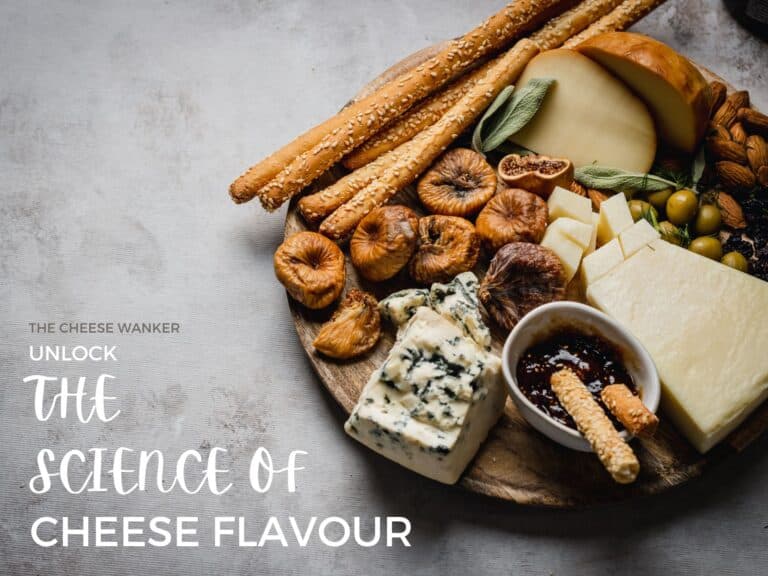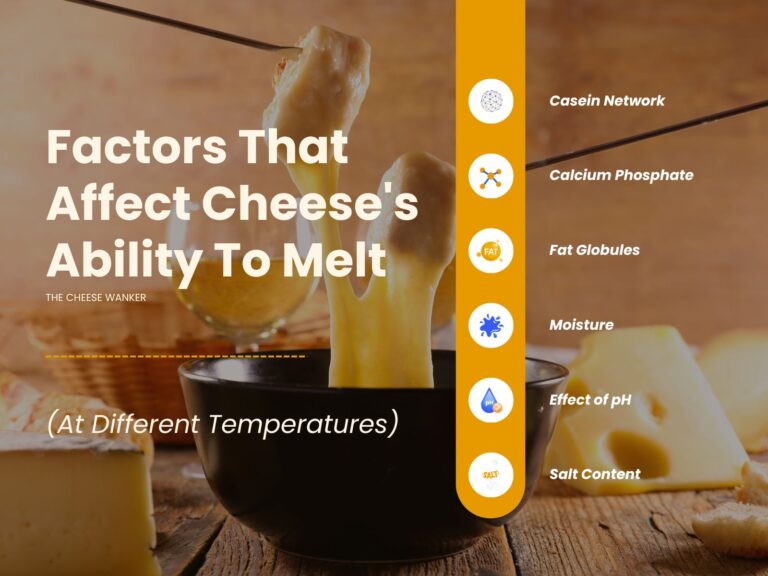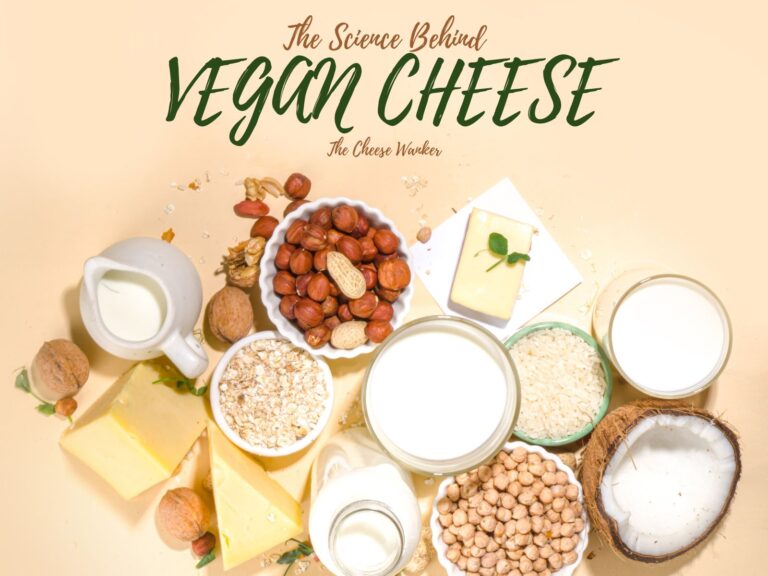Around the world, cheese comes in various colours, textures and flavours. But one common characteristic of many cheeses is their distinct yellow colour. Have you ever wondered why cheese is yellow? In this blog post, we will delve into the fascinating world of cheesemaking to uncover the science behind its golden hue.
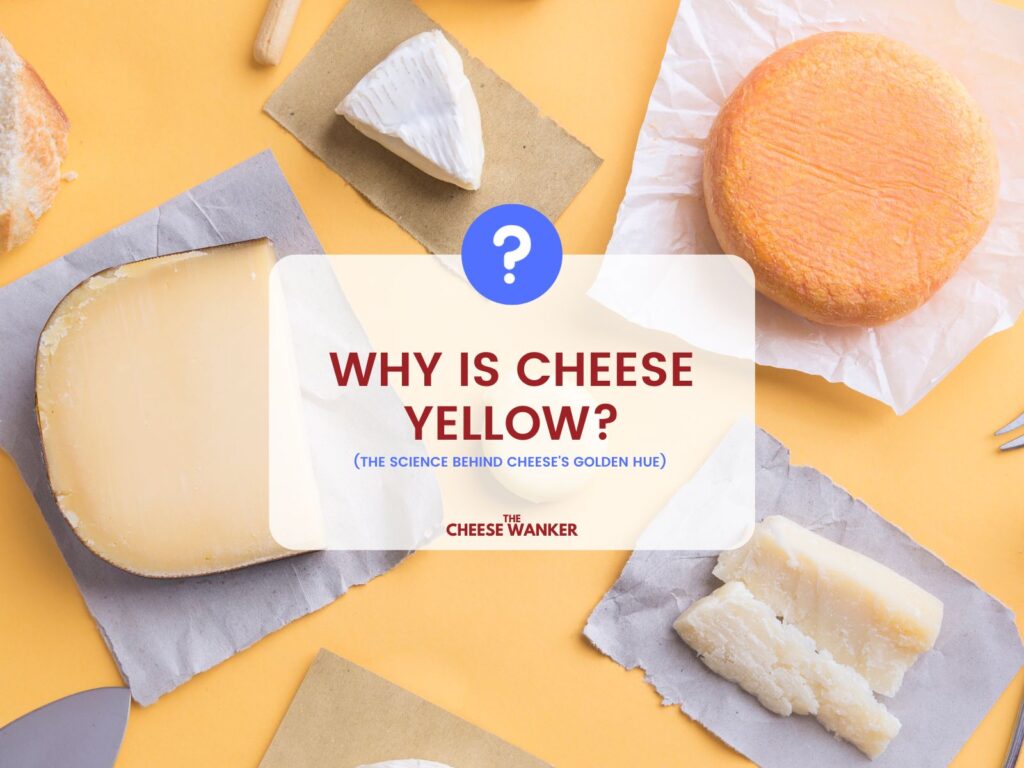
SEE ALSO: Our complete guide to the organoleptic properties of cheese →
Where does cheese get its yellow colour from?
At the heart of every block, wheel or slice of cheese lies the essence of its colour: milk. Indeed, the colour of cheese is intricately woven into the very fabric of milk, the primary ingredient in cheesemaking.
Effectively, the natural colour of cheese derives from the presence of pigments in milk, most notably beta-carotene.
What is beta-carotene?
Beta-carotene, a naturally occurring pigment belonging to the carotenoid family, is a vital nutrient found in various fruits and vegetables. This intriguing compound gets its name from its prevalence in carrots. And it plays a crucial role in both human health and the colour of cheese.
Precursor to vitamin A
One of the most significant roles of beta-carotene is its function as a precursor to vitamin A. In humans, vitamin A is an essential nutrient for vision, immune function and overall growth and development. Once ingested, beta-carotene is converted into vitamin A, making it an important component of a balanced diet.
Powerful antioxidant
Beta-carotene acts as an antioxidant, protecting cells from oxidative stress and damage caused by free radicals. By neutralising these harmful molecules, beta-carotene contributes to reducing the risk of chronic diseases and promoting overall well-being.
Natural colourant
Beyond its nutritional significance, beta-carotene is responsible for the vibrant yellow, orange and red hues found in many fruits, vegetables and, of course, cheese. When present in the milk of grazing animals, beta-carotene gives certain cheeses their characteristic yellow or orange colour.
Dietary sources
While cheese made from the milk of animals grazing on fresh grass is a source of beta-carotene, this nutrient is primarily associated with plant-based foods.
Indeed, carrots, sweet potatoes and other brightly coloured vegetables and fruits are excellent sources of beta-carotene. Including these foods in the diet ensures an intake of this valuable nutrient.
Does beta-carotene content vary between different mammals?
The beta-carotene content and milk colour can vary significantly between different mammal species. This is due to several factors, including genetics, diet and evolutionary adaptations.
Here’s how these variables differ across various mammals:
Genetic variations
Different mammal species have unique genetic traits that influence the production and metabolism of beta-carotene. These genetic differences can result in variations in the presence of beta-carotene in their milk. One great case study for this is the white colouration of goat milk.
Even if goats consume some beta-carotene in their diet, their metabolism might process it differently compared to cows. The way animals metabolise and absorb nutrients can vary across species, influencing the concentration in their milk.
You can read more about why goat milk and cheese are most often pristine white in our detailed post here.
Dietary influences
Furthermore, the diet of mammals greatly impacts the beta-carotene content in their milk. Mammals that consume a diet rich in beta-carotene, such as fresh grass and certain plant species, tend to produce milk with higher beta-carotene levels.
As a result, grazing animals like cows and sheep that have access to green pastures produce milk with natural yellow hue.
On the other hand, goats are browsers and prefer shrubs, bushes and other plant materials. Therefore, their diet contains fewer sources of beta-carotene compared to the diet of cows, leading to lower levels of this pigment in their milk.
Health and reproductive factors
Finally, the health and reproductive status of mammals can also influence the composition of their milk, including beta-carotene content. Factors such as lactation stage, overall health and hormonal changes can affect the presence of beta-carotene in milk.
Influence of animal diet on the colour of milk and cheese
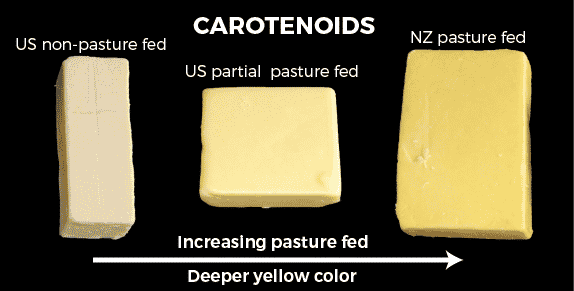
So, we’ve ascertained that there are many different factors that influence the beta-carotene content of milk. But how does this content vary for a specific animal depending on what it eats?
As a matter of fact, the colour of milk (and cheese) can vary significantly depending on the diet of the animals producing the milk. Here’s how the diet of dairy animals influences the colour of their milk:
Grass-fed diets
Cows, goats and sheep that graze on fresh grass have access to a diet rich in beta-carotene. This compound is abundant in green plants and imparts a yellow-orange colour to their milk.
As a result, cheese made from the milk of grass-fed animals often has a natural yellow hue. This phenomenon is common in cheeses like grass-fed Cheddar, which derive their characteristic colour from the beta-carotene in the grass.
Hay and silage diets
In situations where animals are fed hay, silage or preserved grass during periods when fresh pasture is not available, the beta-carotene content in their diet may decrease. Consequently, the milk produced during these periods can be paler in colour.
Cheese made from this milk might appear lighter than cheeses produced during seasons when animals have access to fresh, beta-carotene-rich grass.
Grain-based diets
Dairy animals fed diets primarily consisting of grains, such as corn and soybeans, may produce milk with a lower beta-carotene content. This can result in milk that appears whiter.
Therefore, cheeses made from this milk tend to be paler in colour, lacking the yellow or orange tones found in cheeses made from milk with higher beta-carotene content.
Supplemental feeding
Some dairy farmers supplement their animals’ diets with specific feeds or additives to enhance the beta-carotene content of the milk. This deliberate supplementation ensures that the milk remains consistently yellow, irrespective of the animals’ access to fresh pasture.
What happens to milk during cheesemaking?
Now that we’ve explained why some mammal milks are yellow, let’s look at why that colouration often passes onto cheese.
During the cheesemaking process, enzymes and bacteria are added to milk to ferment and coagulate it, turning it into curds and whey. The curds, which form the basis of cheese, retain the yellow colour from the beta-carotene present in the milk.
Next, let’s investigate why this is the case.
Why does beta-carotene remain in the curds?
The retention of beta-carotene in the curds, while whey is separated, is a fascinating aspect of cheesemaking chemistry. Several factors contribute to this phenomenon:
Protein binding
Beta-carotene has an affinity for proteins. In the milk, beta-carotene can bind to milk proteins, particularly casein, which is the major protein component of milk.
When the milk is coagulated to form curds, these protein-bound beta-carotene molecules are trapped within the curds. As the curds solidify, the beta-carotene remains embedded in the protein matrix.
Fat entrapment
Cheese curds contain both proteins and fats. Beta-carotene is fat-soluble, meaning it dissolves in fats. As the curds form, they encapsulate fat molecules, including those carrying beta-carotene.
Then, the fat globules are retained within the curds, preventing the beta-carotene from escaping with the whey. The latter consists primarily of water, lactose and some proteins.
Heat and enzyme treatment
During cheesemaking, the curds are often subjected to heat and enzymatic actions. These processes cause the proteins in the milk to denature and form a network that traps both fat and beta-carotene.
Additionally, enzymes present in the rennet or starter cultures further facilitate the binding of beta-carotene to the curd particles, making it difficult for the pigment to migrate into the whey.
As a result, the colour of cheese is determined by the concentration of beta-carotene in the curds, which, in turn, is influenced by the diet and breed of the dairy animals and the cheesemaking methods employed.
Historical significance of yellow cheese: A symbol of quality
Throughout history, the colour of cheese has been linked to perceptions of quality, authenticity and richness. In ancient times, when cheesemaking was primarily a local and artisanal endeavour, the colour of cheese was often tied to the animal’s diet and the specific grasses or plants available in a region.
In many cases, cheese made from the milk of cows grazing on fresh, beta-carotene-rich grass would naturally have a yellow or orange hue. This colour variation became associated with high-quality cheese for several reasons:
Nutritional significance
Beta-carotene, a precursor to vitamin A, is not only a pigment but also a valuable nutrient. In societies where vitamin A deficiency was a concern, the presence of beta-carotene in cheese was seen as an indicator of the cheese’s nutritional value.
Therefore, yellow cheese was considered more nutritious due to its higher beta-carotene content.
Seasonal variation
In regions where dairy farming was influenced by seasons, the colour of cheese often changed with the availability of fresh pasture. Cheeses made during periods of abundant grass were naturally yellow, signifying that the animals had access to lush, nutrient-rich feed.
Subsequently, this seasonal variation in colour became associated with the changing quality of cheese throughout the year.
Tradition and perception
Over time, the association between yellow cheese and quality became deeply rooted in cultural traditions. People developed a preference for the rich, golden hues of certain cheeses, believing them to be superior in flavour and texture.
This preference influenced cheesemaking practices and contributed to the perception that yellow cheese was of higher quality.
The annatto scam
In the annals of cheesemaking history, a deceptive practice once prevailed among unscrupulous cheesemakers: the addition of annatto to cheese to pass it off as a higher quality product. Annatto, a natural dye derived from the seeds of the achiote tree, imparts a rich yellow or orange hue to cheese, making it visually appealing.
Fraudulent cheese producers exploited this, using annatto to mask the inferior quality of their products. By giving their cheese an enticing golden colour, they could deceive consumers into believing it was made from high-quality, grass-fed milk, rich in beta-carotene.
This practice persisted for years, leading to misconceptions about the correlation between cheese colour and quality. Thankfully, stringent regulations and industry standards have since curbed such deceptive practices.
Modern perspectives on cheese colour: Quality beyond appearance
In modern times, the perception of cheese quality has evolved. Advances in agriculture, animal husbandry and cheesemaking technology have allowed for greater control over the factors influencing cheese production.
As a result, the colour of cheese is no longer considered a definitive indicator of its quality. Consumers are now more informed about the diverse range of cheese varieties available, each with its own unique flavour profile, regardless of its colour.
Quality cheese is now assessed based on a variety of factors, including flavour, texture, aroma and production methods. Artisanal and specialty cheeses, crafted with expertise and care, are highly regarded, irrespective of their colour.
Additionally, advancements in food science have led to the development of natural and artificial colourants, enabling cheesemakers to achieve consistent colours without compromising quality.
Conclusion
In our journey exploring the intriguing world of cheese, we’ve uncovered the science, history and cultural significance behind its various colours. From the natural pigments in milk to the influence of animal diets, cheese’s hues tell stories of tradition, nutrition and craftsmanship.
The vibrant yellow shades found in some cheeses, originating from beta-carotene present in the milk, were historically perceived as symbols of quality and nutritional richness. However, as our understanding of cheesemaking has deepened and technology has advanced, the emphasis on colour as an indicator of quality has diminished.
Modern cheese enthusiasts recognise that the true essence of cheese lies in its diverse flavours, textures and aromas, crafted through meticulous processes and the expertise of cheesemakers worldwide.
Whether you savour the golden brilliance of a Cheddar, the creamy whiteness of a fresh goat cheese or any other shade in between, each cheese variety offers a unique culinary experience. As we celebrate the rich tapestry of colours in the world of cheese, let us appreciate the artistry and innovation that have made cheese a beloved delicacy across cultures.
Is the colour of your cheese important to you? We’d love to hear your thoughts in the comments section below.
